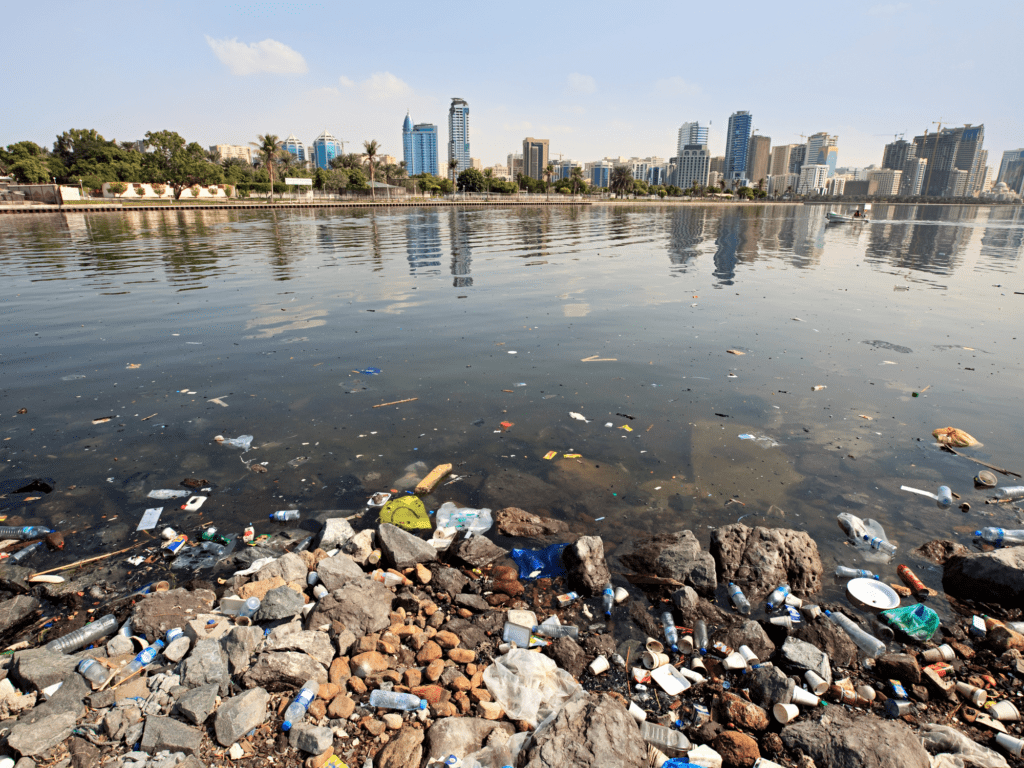Is there a Link Between Diabetes and Environmental Toxins?
Table of contents:
- What are environmental toxins?
- How is diabetes linked to water toxins?
- Arsenic as an environmental diabetogen
- The link between pesticides and diabetes:
- Endocrine disruptors in relation to diabetes:
- Reducing exposure to environmental toxins
- Water filters that remove toxins:
- Conclusion: Protect yourself from diabetes.

The Link Between Diabetes and Environmental Toxins: What You Need to Know
Diabetes is a chronic condition that affects millions of people worldwide. Genetic factors and lifestyle choices contribute to its development. Recent research has shown that environmental toxins may also contribute. Plastics, pesticides, and air pollutants contain harmful toxins that disrupt the balance of hormones in the body. They can also affect insulin production and sensitivity. Diabetes is a major cause of morbidity and death in the United States. In 2015, an estimated 30.3 million people of all ages—or 9.4% of the U.S. population—had diabetes.
In this blog, we’ll explore the latest research on this topic and provide practical tips for reducing your exposure to these harmful substances. Whether you have diabetes or not, this information is essential for anyone who wants to protect their health and well-being. So, let’s dive in and learn more about the link between diabetes and environmental toxins.

What are environmental toxins?
Environmental toxins are substances found in the environment and can harm living organisms.
These toxins can come from a variety of sources, including air pollution, water pollution, and chemicals used in everyday products. Exposure to environmental toxins can cause health problems, including diabetes.
What are the links between environmental toxins and diabetes?
Several types of environmental toxins have been linked to diabetes.
- One of the most well-known toxins is bisphenol A (BPA), which is found in plastics and food containers. BPA disrupts insulin production and causes insulin resistance, which leads to type 2 diabetes.
- Other toxins linked to diabetes include phthalates, found in personal care products, and pesticides used in farming.

How is diabetes linked to water toxins?
For both type 1 and type 2 diabetes mellitus, rates have increased in the United States due to water pollutants. EWG’s analysis found that, since 2019, over 320 toxic substances have been detected in U.S. drinking water systems.
Exposure to certain toxins, such as lead or arsenic, has been linked to diabetes.
Type 1 diabetes is associated with higher intakes of nitrates, nitrites, and N-nitroso compounds, as well as higher levels of polychlorinated biphenyls.
- Diabetes type 1 (T1D) is an autoimmune disease that destroys insulin-producing beta cells in the pancreas. In the body’s defense system, insulin-producing cells are mistakenly seen as harmful aliens that need to be destroyed.
- The toxic effects of nitrate-nitrite-nitrosamine on cells have been controversial for two decades. A study conducted in the UK, the USA, and Finland found high nitrate levels were positively associated with type 1 diabetes incidence, as reported by Parslow et al 2.
In terms of type 2 diabetes, the data on arsenic and 2,3,7,8-tetrachlorodibenzo-p-dioxin indicate a direct correlation.
Non-insulin-dependent diabetes mellitus (type 2 diabetes, T2D) makes up 90% of all diabetes cases.
- It involves disruptions in whole-body glucose homeostasis due to resistance of peripheral tissue to insulin and decreased insulin production by pancreatic β-cells.
- Several Heavy metals, including cadmium, chromium, zinc, mercury, nickel, and arsenic, adversely affect metabolic pathways, contributing to metabolic disorders, including T1D and T2D.
Research suggests that these toxins damage pancreatic cells, which affects insulin production and lead to diabetes.
Arsenic as an environmental diabetogen
According to the 2017 WHO and UNICEF reports, more than 785 million people that year did not have access to basic water services.
- Arsenic is a naturally occurring ubiquitous metalloid, the inorganic forms of which (iAs) are predominantly found in soil, sediment, and surface and groundwater reservoirs.
- A total of 200 million people worldwide are exposed to iAs at levels higher than the EPA and WHO limit of 10 g/L. The USGS estimates that 8% of public drinking water supplies in the US may exceed 10 g/L based on data collected in the mid-to-late 1990s.
- The National Toxicology Program workshop in 2011 found that drinking water with iAs levels above 150 g/L was associated with an increased risk of diabetes.
- In addition to causing pancreatic dysfunction, it led to increased liver gluconeogenesis and oxidative damage.
The link between Pesticides and diabetes:
Statistics from the EPA indicate that more than one billion pounds of insecticides are used annually in the United States. This is for agricultural, lawn, garden, and home applications.
- Investigators found that pesticide exposure was associated with a 61% increased risk of type 2 diabetes.
- In a separate study, 639 women in Greece with elevated blood levels of polychlorinated biphenyls (PCBs) during the first trimester had a four-fold increased risk of gestational diabetes.2.
- The presence of organochlorine, organophosphate, and neonicotinoid chemicals in drinking water can increase blood OCP levels. This increases T2DM risk.
- Mexican Americans were evaluated for their exposure to the pesticide DDT (dichlorodiphenyltrichloroethane) and its metabolite DDE (dichlorodiphenyldichloroethylene), in their blood. Organochlorine insecticide DDT is associated with increased diabetes risk.
- Malathion, an organophosphate insecticide, has been found to reduce pancreatic insulin secretion and induce fasting hyperglycemia, a hallmark of diabetes.

How Do Pesticides Promote Diabetes?
Diabetes and pesticide exposure can be explained by several mechanisms. It is believed that insecticides cause diabetes by:
- Increased gluconeogenesis.
- Inhibiting acetylcholinesterase,
- Causing oxidative stress and inflammation.
- Disrupting circadian rhythms.
- Interacting with the gut microbiota.
Endocrine disruptors in relation to diabetes:
A growing body of evidence suggests that endocrine disruptor chemicals, so-called for their ability to disrupt the body’s endocrine system, are associated with a wide range of health problems, from developmental and reproductive disorders to cancer, obesity, and diabetes.
- In addition to bisphenol A, phthalates, chlordane compounds, parabens, and pesticides, there are other EDCs that are related to diabetes.
- EDCs can interfere with the normal regulation of various hormones involved in glucose metabolism, such as insulin, glucagon, and cortisol.
- Insufficient insulin production or deficiency can lead to elevated blood sugar levels and diabetes risk.
Reducing exposure to environmental toxins
Reducing your exposure to environmental toxins is a crucial step in protecting your health. Preventative strategies for diabetes-related contamination include:
- Filter Drinking Water: Use a reliable water filtration system to remove contaminants from your drinking water. Look for filters certified to remove a wide range of contaminants, including heavy metals, pesticides, chlorine, and volatile organic compounds (VOCs).
- Choose Organic Foods: Choose organic produce and foods whenever possible. Organic farming practices typically minimize synthetic pesticides and fertilizers, reducing your exposure to potentially harmful chemicals.
- Reduce Plastic Use: Minimize plastic use, especially those that come into contact with food and beverages. Plastics can leach harmful chemicals, such as bisphenol A (BPA) and phthalates, into food and water. Choose glass, stainless steel, or a Borosilicate Glass Pitcher instead.
- Air filters: You can reduce air pollution in your home by using air filters and avoiding products containing volatile organic compounds (VOCs).
- Regular Monitoring: Regularly monitor your blood glucose levels and maintain a healthy lifestyle with regular exercise, a balanced diet, and appropriate medical care to prevent diabetes onset or progression.
- Lifestyle changes: One key step is drinking plenty of water, which flushes toxins out of your system.
Ensure access to clean and safe drinking water by using reliable water filtration systems or consuming bottled water from Life Water Report.

Water filters that remove toxins:
To remove arsenic, pesticides, and bisphenol (BPA) from water, certain types of water filters can be effective. Here are some options.
- Reverse Osmosis (RO) Filters: RO filters remove a wide range of contaminants, including arsenic, pesticides, and BPA. They use a semi-permeable membrane to remove impurities from the water.
- Activated Carbon Filters: Activated carbon filters remove pesticides and BPA from water. These filters use activated carbon to adsorb contaminants and improve water taste and odor.
- Ion Exchange Filters: Ion exchange filters remove heavy metals like arsenic from the water. They work by exchanging ions in the water for less harmful ions, reducing arsenic concentration
- Multi-Filter Systems – Water Systems with 4 or more filters are the second best option, over Reverse Osmosis Systems.
Visit http://www.LifeSciencesWater.com or http://www.LifeWaterReport.com and get a multi-stage filter system to improve your and your Family’s health.
Life Water Report offers top-quality systems at affordable prices. Our systems are manufactured with the highest quality components, most come with an outstanding Lifetime warranty, and have high customer satisfaction ratings.
Conclusion: Protect yourself from diabetes.
Globally, more than 170 million people suffer from diabetes—a number some researchers say will reach 366 million by 2030.
Diabetes is a serious health problem that affects millions of people worldwide. While genetic factors and lifestyle choices play a role in its development, recent research has shown that environmental toxins may also contribute. By reducing your exposure to these harmful substances, you can protect your health and reduce your diabetes risk.
You can check your water quality through the Life Water Report. You can also visit Water Analysis Report – We are LifeWaterReport and enter your zip code.
Find out if your drinking water is contaminated with a FREE WATER REPORT of your area. By working together, we can create a healthy and safer environment for ourselves and future generations.
M. P. L. (n.d.). Environmental contaminants as etiologic factors for diabetes. NIH.
(n.d.). Association of type 1 diabetes and concentrations of drinking water components in Newfoundland and Labrador, Canada. BMJ Journals.
“Arsenic in Drinking Water and Diabetes.” Mdpi, 1 Apr. 2023,
Hilary Macht. “Common Environmental Chemicals Increase Your Risk of Diabetes.” 23 Oct. 2019,
“Pesticide-Induced Diseases: Diabetes.” BEYONDPESTICIDES,
